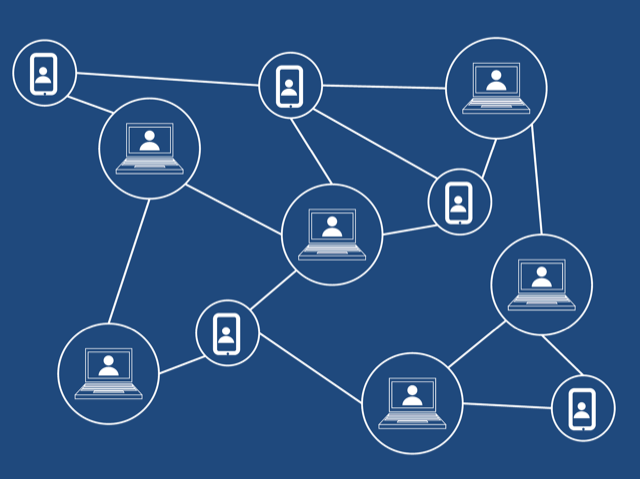This article originally published in Industrial Distribution here.
A growing demand for high-quality product data—to support service, recalls, and corporate social responsibility efforts—is just one of many concerns for modern retail supply chain managers. Expectations are also heightened for supply chain information accuracy. For example, what type of computer or router is being shipped? How many are in a particular shipment? What temperatures or humidity levels are they being exposed to? Are they being handled correctly?
Multiple parties need this information, because they need answers. In an E. coli outbreak, Walmart needs to know which lettuce is bad so that it discards only the produce from that farm. It’s similar with computers: If a quality issue is identified in a component or batch, only the machines with those bad parts need to be serviced. Parties up and down the supply chain need the right information in order to quickly identify and respond to events that may spoil or damage products, resulting in preventable losses.
At other points on the supply chain, value-added distributors and resellers need insights into previous quality checks performed on certain components and products so they can reduce redundant testing and improve their abilities to predict and respond to failures. Likewise, manufacturers need information about the configuration of individual items and any changes that occur as parties like distributors and resellers build on base units to create more tailored solutions.
Transparency throughout the supply chain is critical to boosting operating efficiency, building trust with customers, ensuring brand reputation, and improving agility and reaction speed. In some cases, it’s also mandatory. Regulations like California’s Transparency in Supply Chains Act, aimed at curbing human trafficking, and the federal Drug Quality and Security Act, enacted to stop illegal drug distribution, are increasingly adding to the demand for thorough, accurate supply chain data.
Seeking Solutions
Existing systems and traditional electronic data interchange messages weren’t designed to support these data requirements. This leads to inefficient workarounds such as using email and Excel spreadsheets to share vital information—dangerously insecure formats. It also leads to a proliferation of bespoke solutions that support only narrow requirements. Furthermore, those who try to integrate their systems to capture data from upstream and pass it downstream may find themselves stuck with an ever-growing list of one-off integration projects.
The struggle to maintain information continuity isn’t new. Unfortunately, neither are the solutions most companies rely on. They are typically systems designed decades ago to support vertically integrated companies with mostly static supply chains.
In response, blockchain is increasingly recognized as a technology that enables solutions that simplify data sharing from end to end in even the most complex supply chains. Unlike electronic data interchange-based messaging, blockchain systems provide a single data set that all parties involved in a supply chain collaboratively maintain. Blockchain technologies offer the security, privacy, and trust needed for trading partners to share data and business logic. This is a huge improvement that eliminates the problems of constantly trying to keep different systems in sync.
Enterprise blockchain has come a long way in the past several years, proving its utility and versatility. Many of the risks and challenges associated with implementing blockchain networks have been eliminated, allowing this technology to be used to solve a wide range of business problems. Future blockchain applications promise to be even more sophisticated and economical.
Looking Ahead
Distributors are in a great position to drive the implementation of blockchain in solving the need for more and higher-quality data about supply chain components. Though it’s possible to wait for a technology provider, competitor, or customer to define and build a blockchain system, distributors that get ahead of this new approach will benefit from early adoption, likely gaining significant competitive advantages.
Start by identifying gaps in the systems and standards currently used to share information and transact with trading partners. Golden State Foods, for example, partnered with IBM to use blockchain to coordinate among parties on the supply chain, allowing the food service supplier to track the movement of beef at every stop and monitor its temperature along the way. The data that became visible via blockchain gave Golden State Foods unprecedented insight into every aspect of the distribution and manufacturing process, and it ultimately led to strategic optimizations—and better beef.
In every case, implementing the technology now will allow businesses to influence industry standards in favorable ways and to establish new revenue streams based on providing access to blockchain-based systems.
Blockchain isn’t the right answer for every challenge in integrating with partners, but it’s a valuable tool in your kit. Working with a partner who has both blockchain and supply chain experience will illuminate which questions to ask in order to determine whether a blockchain approach is worth implementing. That said, there’s no better way to get answers than to find a problem that looks like a fit and to start prototyping solutions to test the benefits of the approach. Blockchain may not change everything, but in an era when supply chains management must change, it will inevitably drive that transformation.
To learn more about how blockchain can improve your supply chain, download our whitepaper.

